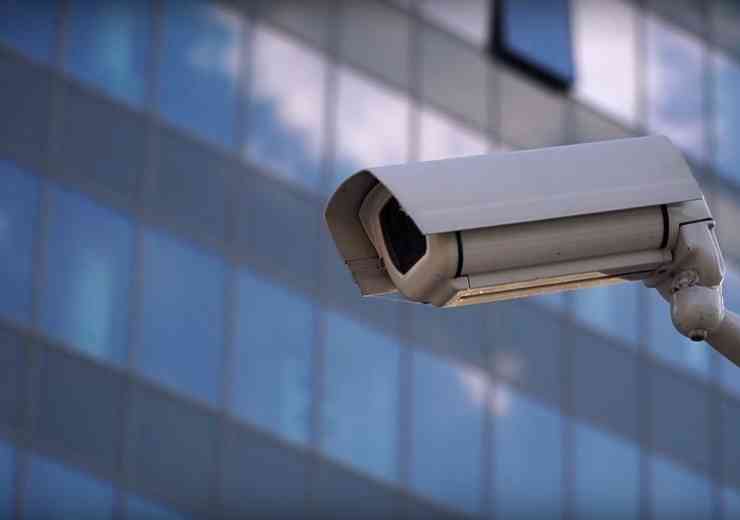
Remote Radicalisation: Mitigating the risks
James Kelly, chief executive of the British Security Industry Association, discusses the importance of ensuring a physical security presence across the UK’s national infrastructure to ensure that in the event of an unforeseen attack there is a basic level of physical defence at all times
In January 2018 a report by Max Hill QC, the Independent Reviewer of Terrorism Legislation warned that terrorists are being ‘remotely radicalised’ online in a new trend driving a rising threat to the UK. Worryingly, the report highlighted that methods of attack are diversifying as plans become harder to detect.
Stopping terrorists in their tracks before plans come to effect is always the preferable outcome. However, with terrorist radicalisation increasingly happening in cyber space, government security forces are under immense pressure when it comes to pin-pointing individuals or groups that pose the highest risk to the British population. Reflecting on current operations, the Director General of MI5, Andrew Parker, recently said that the tempo of counter-terrorism operations was the highest he had seen in his 34-year career.
With terrorist radicalisation and planning dramatically changing from just a few years ago where would-be terrorists were using text messages, meeting up in person and buying bomb-making materials in local shops, it is more important than ever that the necessary physical measures are put in place as the first line of defence should a planned attack go undetected. Without effective physical security in place, the devastating consequences of attacks are severely multiplied.
Protecting the public
Terrorist targets typically focus on areas open to the public with dense populations in order to cause the highest possible damage and loss of life possible. As seen in recent attacks across Europe, a huge amount of damage can occur in a very short timeframe. Therefore, it is crucial that spaces open to the public – whether internal or external – have a basic level of physical security at all times.
As seen in the Westminster and London Bridge attacks, outside spaces can be incredibly hard to safeguard against terrorist attacks. When considering appropriate protection against terrorist attack, a challenge for designers and planners is balancing urban design principles against the implementation of effective counter terror measures. That is, creating an environment that retains and attracts people to places whilst also keeping them safe and secured against attacks. Invisibly integrated components such as structurally enhanced bus shelters, lamp columns, benches or cycle racks can help prevent vehicle-borne attacks on pedestrianised areas while maintaining practical aesthetic appeal.
Other hostile vehicle mitigation (HVM) techniques include making use of bollards, concrete planters and other physical architecture, or more mobile solutions such as water or sand filled barriers that are lifted into place to provide some, but not guaranteed, protection. Rudimentary temporary solutions may also include other vehicles – potentially emergency vehicles – and boulders, concrete blocks or other heavy objects that can be relatively easily moved at reduced cost.
Blast resistance
Protection against explosive or penetrative (ramming) attacks is another consideration when it comes to physical counter terror measures in spaces open to the public. External barriers or a strengthened perimeter will help prevent terrorists accessing crowded areas such as stadiums, concert halls, museums or retail centres.
Similarly, building materials can play a crucial role. By using materials which have a reduced risk of fragmentation such as blast resistant glazing and structural design which reduces the risk of building collapse, the devastating effects of explosions in public spaces can be dramatically reduced.
Where possible doors and locks should also be able to withstand entry from armed intruders. To achieve this, good quality five-lever mortise locks can be fitted to doors, or better still, high security cylinder locks. Doors should also be strong and in good condition, complying with the essential British Standard PAS 24-1 ‘Doors of Enhanced Security’.
Locks should also be fitted to windows, especially those that are on the ground floor of a building or accessible - such as from a flat roof. Where windows are out of sight of CCTV cameras, a grille or shutter may also be necessary. Making use of robust ground floor façade materials will help to provide cover in the event of a firearms attack.
Building management facilities
It is vital that building management systems are put in place with counter terror measures in mind. For example, by separating general heating, ventilation and air conditioning systems for entrance areas, delivery areas and mailrooms from those occupying the central spaces of a building it is possible to safeguard a large percentage of the building’s population from air-borne or chemical attacks.
In order to prevent attacks making use of hazardous materials that may already be stored on site or nearby, potentially dangerous materials should always be stored a safe distance from a building. Outbuildings also require a high quality lock in order to protect their contents.
Where possible, communication systems, such as public-address systems should also be installed to pass on advice to members of the public caught in a terrorist attack.
Counter terror training
Another effective way of maximising physical security measures across the UK’s national infrastructure is exposing those who work in public spaces day-to-day to effective counter terror training so that in the event of an attack they are able to provide on the spot support and advice.
Project Griffin, the national counter terrorism awareness initiative for businesses produced by the UK’s National Counter Terrorism Security Office is an effective resource in this regard. For years the initiative has been equipping private security officers with invaluable counter terror training so that they are able to gain a better understanding of the threat of terrorism, what to do in the event of an attack and how to recognise and report suspicious activity. This sort of increased collaboration between the public and private sector is vital when it comes to tackling terrorism.
An integrated approach
While physical security measures are crucial in their own right when it comes to protecting the public from increased threat levels, they are most effective when used in collaboration with electronic security systems such as CCTV and alarm systems. For example, perimeter fences are now integrated on many sites as part of a comprehensive solution, fitted with devices that can detect vibration, or video surveillance measures that can be placed strategically along the perimeter.
Ultimately, no matter what combination of physical and electronic measures is chosen, the most important ‘box to tick’ is that the chosen security products and services are provided by a reputable supplier who meets with the relevant standards. After all, a site is only ever as secure as its weakest link, and skipping corners when it comes to quality can have catastrophic effects.
An experienced security consultant can carry out bespoke security practical site assessments which consider the existing architecture of a building, its facilities systems, whether HVM measures would be practicable as well as many other security considerations. Members of the BSIA’s Specialist Services section have a wealth of expertise and experience and are able to provide guidance on a range of counter-terror related security products and services.
digital issue




















